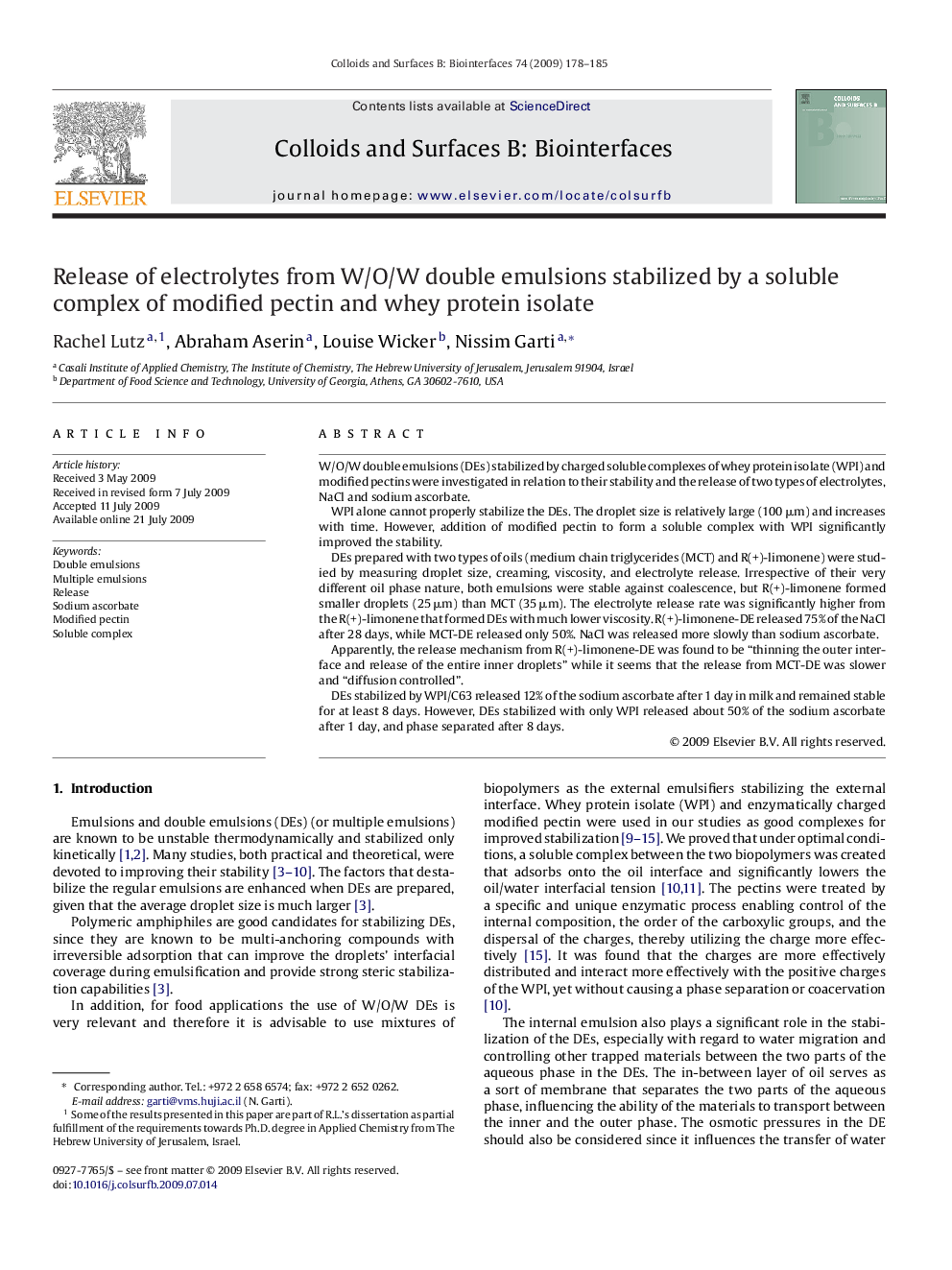| کد مقاله | کد نشریه | سال انتشار | مقاله انگلیسی | نسخه تمام متن |
|---|---|---|---|---|
| 601823 | 879955 | 2009 | 8 صفحه PDF | دانلود رایگان |

W/O/W double emulsions (DEs) stabilized by charged soluble complexes of whey protein isolate (WPI) and modified pectins were investigated in relation to their stability and the release of two types of electrolytes, NaCl and sodium ascorbate.WPI alone cannot properly stabilize the DEs. The droplet size is relatively large (100 μm) and increases with time. However, addition of modified pectin to form a soluble complex with WPI significantly improved the stability.DEs prepared with two types of oils (medium chain triglycerides (MCT) and R(+)-limonene) were studied by measuring droplet size, creaming, viscosity, and electrolyte release. Irrespective of their very different oil phase nature, both emulsions were stable against coalescence, but R(+)-limonene formed smaller droplets (25 μm) than MCT (35 μm). The electrolyte release rate was significantly higher from the R(+)-limonene that formed DEs with much lower viscosity. R(+)-limonene-DE released 75% of the NaCl after 28 days, while MCT-DE released only 50%. NaCl was released more slowly than sodium ascorbate.Apparently, the release mechanism from R(+)-limonene-DE was found to be “thinning the outer interface and release of the entire inner droplets” while it seems that the release from MCT-DE was slower and “diffusion controlled”.DEs stabilized by WPI/C63 released 12% of the sodium ascorbate after 1 day in milk and remained stable for at least 8 days. However, DEs stabilized with only WPI released about 50% of the sodium ascorbate after 1 day, and phase separated after 8 days.
Journal: Colloids and Surfaces B: Biointerfaces - Volume 74, Issue 1, 1 November 2009, Pages 178–185